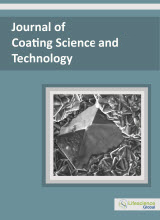|
|
|
Abstract: Diamond offers a range of unique properties, including wide band of optical transmission, highest thermal conductivity, stiffness, wear resistance and superior electronic properties. Such high-end properties are not found in any other material, so theoretically it can be used in many technological applications. But the shortcoming has been the synthesis of the diamond material in the laboratory for any meaningful use. Although microwave plasma chemical vapour deposited (MPCVD) has been in practice since 1980s for the diamond growth but it is in the past 7-8 years that its potential has been realised by the industry due to capability of MPCVD to deposit diamond, pure and fast, for commercial uses. There are many CVD techniques for growing diamond but among them MPCVD can only make single crystal diamond (SCD) effectively. SCD grown by MPCVD is also superior to other forms of diamond produced in the laboratory. For example, SCD is necessary for the best electronic properties - often outperforming the polycrystalline diamond (PCD), the high pressure high temperature (HPHT) diamond and the natural diamond. In many applications the short lateral dimensions of the lab-grown diamond available is a substantial limitation. Polycrystalline CVD diamond layers grown by hot filament CVD solved this problem of large area growth, but the presence of grain boundaries are not appropriate for many uses. On the other hand, there is still limitation in the area over which SCDs are grown by MPCVD, only upto 10-15 mm lateral sizes could have been achieved so far, while there are recipes which rapidly grow several mm thick bulk SCDs. This lateral size limitation of SCDs is primarily because of the small seed substrate dimension. Although natural and HPHT diamonds may not be suitable for the intended application, still they are routinely used as substrates on which SCD is deposited. But the problem lies in the availability of large area natural SCD seeds which are extremely rare and expensive. Moreover, large diamond substrate plates suitable for CVD diamond growth have not been demonstrated by HPHT because of the associated high economic risk in their fabrication and use. Other than lateral dimension, purity of SCD is also very important for technological use. Natural diamond is often strained and defective, and this causes twins and other problems in the CVD overgrowth or fracture during synthesis. In addition, dislocations which are prevalent in the natural diamond substrate are replicated in the CVD layer, also degrading its electronic properties. HPHT synthetic diamond is also limited in size, and generally is of poorer quality in the larger stones, with inclusions being a major problem. There will be much research interest in the next 10 years for the MPCVD growth of SCD. Purer and bigger SCDs will be tried to grow with faster and reproducible MPCVD recipes. Here the MPCVD growth of SCD is being reviewed keeping in mind its huge technological significance in the next decades or so. Discoveries of the commercial productions of silicon, steel, cement different materials have built modern societies but higher scales will be achieved with the advent of lab-grown diamond. Keywords: Microwave plasma CVD, single crystal diamond, properties, application, review. |

























